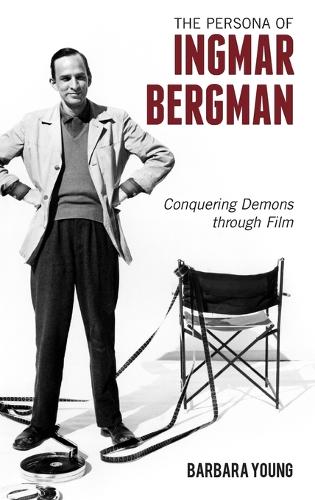
The Persona of Ingmar Bergman: Conquering Demons through Film
(Hardback)
Publishing Details
The Persona of Ingmar Bergman: Conquering Demons through Film
By (Author) Barbara Young
Bloomsbury Publishing PLC
Rowman & Littlefield Publishers
15th October 2015
United States
Classifications
General
Non Fiction
791.430233092
Physical Properties
Hardback
250
Width 159mm, Height 236mm, Spine 22mm
503g
Description
Born to a mother who did not want him and a father who humiliated him during his upbringing, Ingmar Bergman somehow endured his dysfunctional family to become one of the great artists of the twentieth century. However, the scars left from his early agony affected him both physically and emotionally. He suffered with a disabling psychosomatic gastrointestinal illness and serious problems in his interpersonal relationships. In The Persona of Ingmar Bergman: Conquering Demons through Film, Barbara Young looks at how the directors personal life shaped his creative output. A practicing psychiatrist and psychoanalyst, Young probes Bergmans relationships with his parents, his wives, his children, and his colleagues to explore the meanings of his many films. As Bergman gradually began to work through his psychological problems, he accomplished something that few people have ever donehe analyzed himself. The films examined in this study include the majority of his features, including The Seventh Seal, Wild Strawberries, The Virgin Spring, Through a Glass Darkly, The Hour of the Wolf, The Passion of Anna, Cries and Whispers, Face to Face, Autumn Sonata, Fanny and Alexander, and Persona. Young also draws upon recorded interviews and Bergman's autobiographical novels to provide further insight into the director's creative process. While many books have been written about Bergman and analysts have studied particular films, this volume represents a unique approach to understanding an artist through his art. The Persona of Ingmar Bergman will appeal to film and art students, as well as those in the psychotherapy profession, and of course, the directors fans throughout the world.
Reviews
Merging biography, cinema studies, and psychoanalysis, psychiatrist Young traces the life and career of storied Swedish director Ingmar Bergman and examines how his rocky personal life shaped his films in this sometimes insightful . . . history. Moving chronologically, from Bergmans unhappy childhood (after nearly dying of the Spanish flu shortly after birth, he was raised briefly by his grandmother and never formed a strong bond with his mother) to his promiscuous, illness-riddled adulthood, Young highlights each of the directors films and stage productions. As a photographer herselfand there is often too much of the author hereshe has an eye for Bergmans striking visuals, such as the use of light and shadows in one of his bestknown films, The Seventh Seal. Young rather repeatedly reminds the reader that Bergman worked to exorcise his inner demons through his art, and his films were often direct reflections of his personal crises; he was married five times and engaged in multiple affairs on and off the set, the details of which worked their way into the screenplays for Thirst and Sawdust and Tinsel. . . . Bergmans life and work are as rich as ever, and both are as he once described his ideal film: 'I want to give [the audience] a blow in the small of the back, to scorch their indifference, to startle them out of their complacency.' * Publishers Weekly *
Author Bio
Barbara Young is a psychiatrist and psychoanalyst who has been practicing in the Baltimore, Maryland area for more than 50 years. She has published twenty-five papers on the relationship of therapy and creativity. Young is also an accomplished photographer.
